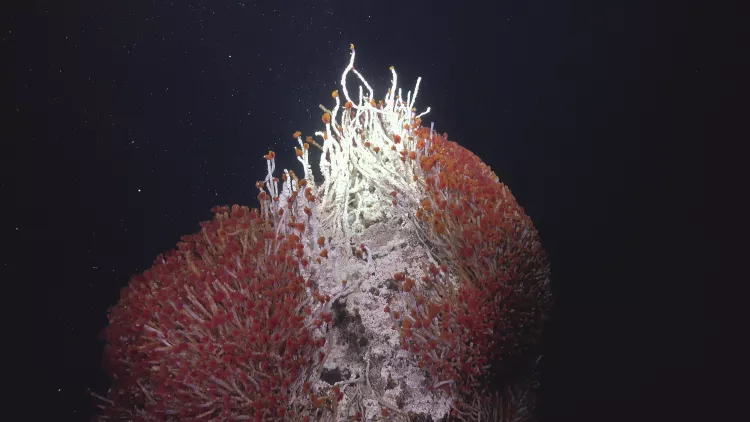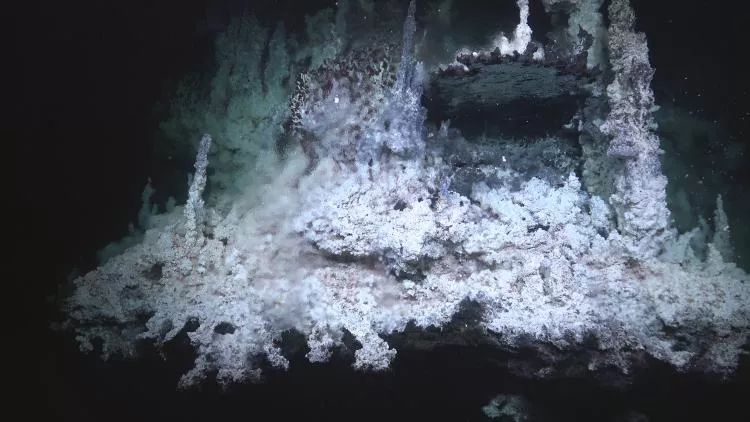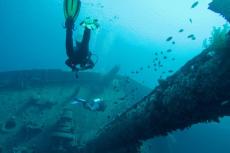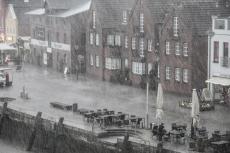Hydrothermal vents and possible new species discovered in Gulf of California
A multidisciplinary team of scientists from Mexico and the U.S. discovered new hydrothermal vents and six possible new animal species during a 33-day expedition off the coast of La Paz on Schmidt Ocean Institute’s research vessel Falkor.
The hydrothermal vents are located in the Pescadero basin and are unique both in their chemistry and appearance to other known hydrothermal vents, as they are the only ones currently observed to emit clear fluids as opposed to dark, smokey fluids associated with iconic “black smoker” vents.
The underwater robot ROV SuBastian was used to explore and sample vents emitting fluids at temperatures up to 287°C (549°F) along with the unique animal communities inhabiting this extreme environment. ROV SuBastian additionally captured stunning imagery of the seafloor including hydrothermal mirror pools, calcite spires, and iridescent blue scale worms.
New species
During this expedition, six or more possible new species, including polychaetes, arrow worms, crustaceans, molluscs and roundworms were found, along with ten known species not previously found in the Pescadero Basin.

Indigenous names
The largest of the new vent mounds, named Maija awi, sits midway between the JaichaMaa ‘ja’ag vent field, discovered by the same team during Schmidt Ocean Institute’s 2018 R/V Falkor expedition, and the Auka vent field, discovered during an expedition by the Monterey Bay Aquarium Research Institute (MBARI) in 2015.
Additional hydrothermal vents were found south of JaichMaa ‘ja’ag, and are named ’Melsuu. The names of the vent fields and many of the individual mounds and chimneys derive from the languages of the indigenous Yuman peoples of Baja California.
Fact file
Schmidt Ocean Institute was established in 2009 by Eric and Wendy Schmidt to advance oceanographic research through the development of innovative technologies, open sharing of information, and broad communication about ocean health. It operates Falkor, the only year-round philanthropic research vessel in the world that is made available to the international science community at no cost. For more information, visit www.schmidtocean.org.
























